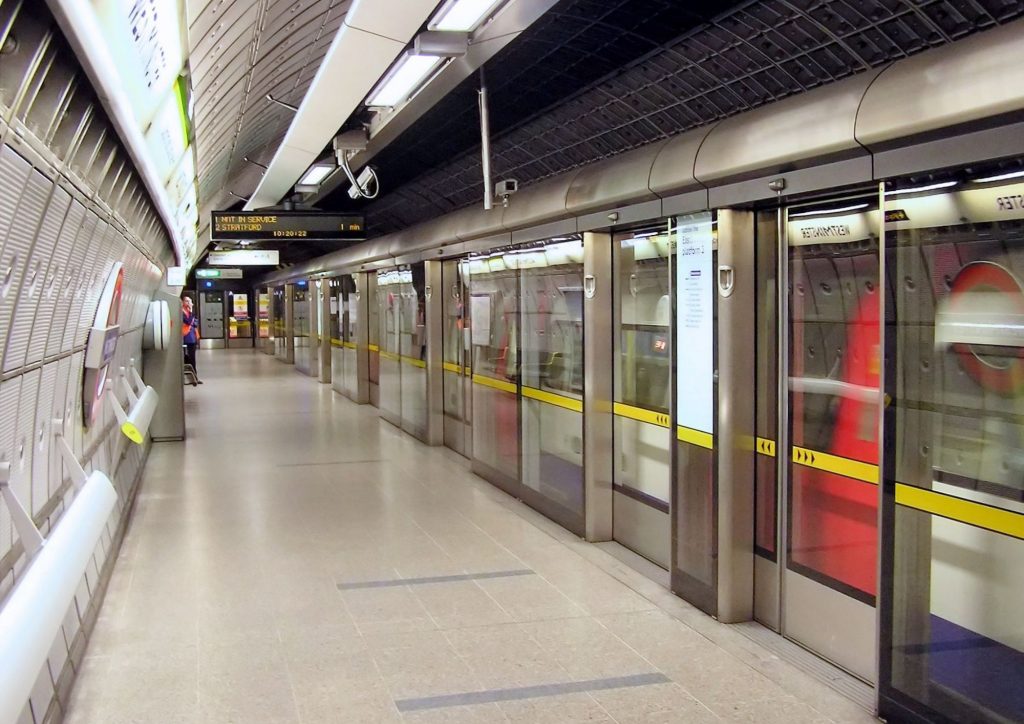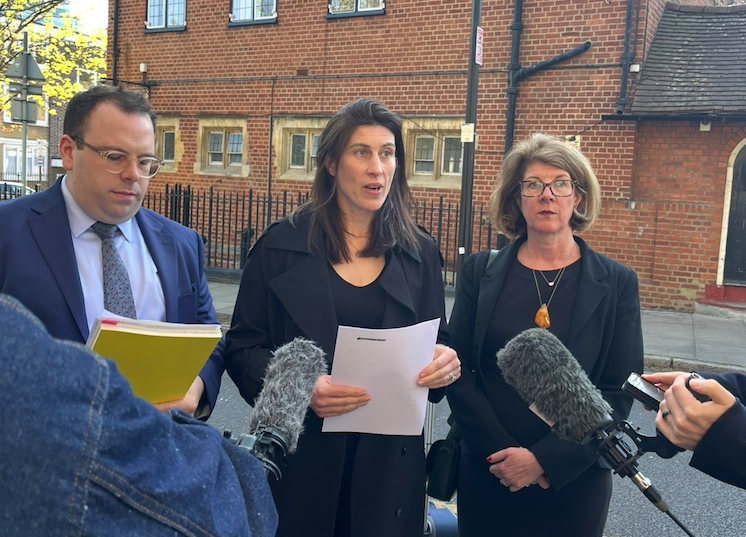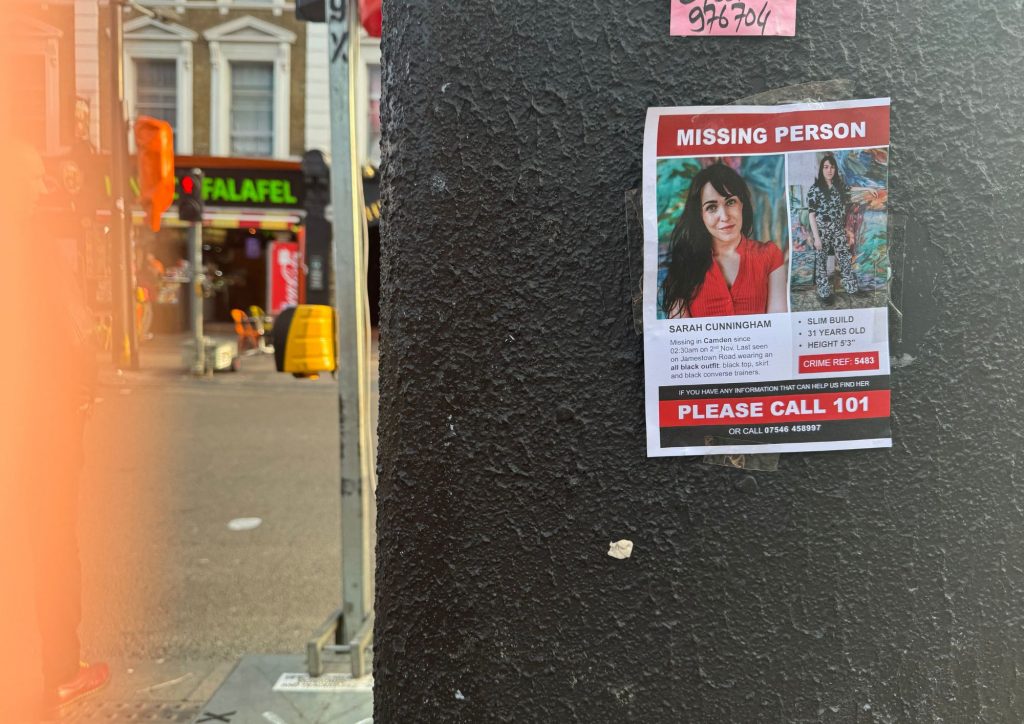Sarah Cunningham death: Tragedies on the Tube could be prevented…. but it costs too much
Caitlin Maskell looks at what could be done to stop people dying or being serious injured on the transport network
Saturday, 19th April — By Caitlin Maskell

Sarah Cunningham died after walking into a tunnel at Chalk Farm [George Darrell, courtesy of Lisson Gallery]
IN the days since the verdict of an inquest into Sarah Cunningham’s death, there have been a clutch of unkind headlines.
It might be called victim-shaming to focus now on what she had consumed on the night something made her walk into the tunnel at Chalk Farm underground.
This, after all, was not the only death or serious injury on London’s tube network, and each tragedy has occurred at stations with open platforms.
It was suggested this week that there is already a “clear and proven” solution to preventing these incidents, but you will already have guessed the barriers to its implementation.
The will of those in charge at Transport for London, City Hall and the government, set against spending decisions in a world of strained finances and political choices.
The inquest at Poplar Coroner’s Court heard that Ms Cunningham, a 31-year-old artist, was discovered three days after she was reported missing on November 1 last year.
As we reported last week the court was shown CCTV footage of Ms Cunningham lowering herself onto the tracks on the northbound platform and walking into a tunnel.
Coroner Mary Hassell ruled the case as an accidental death.
It may seem like it is stating the obvious that none of this could have happened with the door system which we can see as a standard installation on new infrastructure projects like the Elizabeth Line.
The Jubilee line in parts has similar protection.
There appears, however, to be a little appetite to retrofit the city’s ageing stations, an idea which would come with huge costs.
On the steps of the court, Ms Cunningham’s family nevertheless called for Transport for London to take “swift and strong action to ensure what happened to Sarah could not happen to anyone else,” and that “passengers, vulnerable or not, should be able to expect their safety as a bare minimum when travelling on the TfL network.”
Not only is platform access up for debate, there are questions as to why nobody saw her climb on the track on a camera system and take emergency action.
Alex Barron, associate director of the Transport Strategy Centre (TSC) at Imperial College London told the New Journal this week: “Platform doors are a clear and proven solution that significantly improve safety, but to implement would be extremely costly, complicated, and disruptive on an old network like London Underground, with 100-year-old platforms that were never designed to have heavy infrastructure right at the edge.
“Platforms would need to be reinforced or possibly even fully reconstructed, and the existing vertical and horizontal gaps and platform curves are much more challenging to address than for newer systems.Because of these factors, there are very few examples globally of legacy systems similar to London retrofitting platform doors.”

Retrofitting the tube network with platform doors like these ones on the Jubilee line would come at a mammoth cost
He added: “Infrastructure-heavy systems like metros, particularly older ones that have suffered from previous periods of underinvestment, have very large reinvestment needs to maintain overall system safety and reliability, so there is a significant challenge to balance expenditures across these many needs.
“If a large chunk of investment were to be invested in one area (such as platform doors) it may well take away from other critical needs, such as the 50-plus-year-old trains operating on the Bakerloo Line.”
The New Journal has reported over several years that a cost decision lies behind delays to making London’s tube network truly step-free.
Even during more than a year of escalator work at Kentish Town tube station recently, the idea of using the works closure as a moment to install a lift was never really on the table – to the dismay of disabilities campaigners.
Similarly, long-held ambitions to meet the challenge of crush-levels of passengers at Camden Town and Holborn stations have been kicked into the long grass, amid an unending funding negotiation between London Mayor Sadiq Khan and the government.

Ms Cunningham’s cousin, Beccy, outside Poplar Coroner’s Court
The New Journal reported concerns about the lack of safety barriers in tube stations following the Ms Cunningham’s death.
Dale Smith Head of Operations for the Northern line told the court at the inquest that “Sarah walking down that tunnel was a highly unusual thing to happen.”
TfL has been trailing various modes of technology on the network including the use of AI at stations.
“Smart stations” were trialled at Willesden Green Tube station for a year between November 2022 and September 2023 and used existing CCTV, AI algorithms and numerous detection models to detect patterns of behaviour.
Examples included people leaning over the platform edge but there are concerns over how the data would be stored.
Mr Barron is also director of a group for metro systems, COMET, which includes London Underground and 44 other metro systems. It shares data about performance, practice and safety.
He said: “In terms of a metro system doing it right – I think it all relates to the context, generally speaking as you might imagine newer systems in places like Asia tend to be much safer than older systems in Europe and North America and there’s lots of reasons for that but to a large extent it is because of the infrastructure, the technologies deployed at the time of construction and obviously then there are a wide range of other supporting factors such as the culture and the level of staffing and what those entail.”
Mr Khan, re-elected last year, has the stated aim of eliminating deaths on the transport network by 2041 – including the tube.
Ms Cunningham’s family said in the statement read by their family solicitor Thomas Jervis: “We are hearing more and more stories in the news of people being hurt or killed on TfL’s transport network. Sarah’s family want to know what is being done to address this?
“The coroner in Sarah’s case wrote to TfL back in 2013 about a similar case. This case raised concerns about the risk of future deaths. It is clear not enough was done to minimise this risk.
“Neither Transport for London nor Sadiq Khan have reached out or apologised to Sarah’s family for the agony that they have gone through.
“The Sarah Hope Line within TfL, which was set up to help injured people and bereaved families, has not supported this family. They want to know why.
“TfL’s own figures had shown an alarming rise in deaths and serious injuries on the London Transport Network and those impacted wanted reassurances that there would be no more avoidable deaths or serious injuries.
“In response, TfL’s Chief Safety, Health and Environment Officer appeared on TV and said she felt the TfL network was safe, and that TfL take safety seriously. Less than one month later, Sarah died.”
A Transport for London spokesperson said: “We will take the time to properly consider any recommendations made by the coroner and will respond to them in due course, however we have already put in place actions following our own internal investigation.”
They said trials of new technology were underway in London, but that the Willesden Green scheme was mapping fare evasion at barriers.
‘Indomitable Sarah’
ONE or two stickers can still be seen in the Camden Town area, appealing for help in the search for Sarah Cunningham.
Friends and family had been desperate for any news in the three days between she was reported missing last November and later found in the tunnel.

The search leaflets for Sarah Cunningham in Camden Town
At the inquest last week, coroner Mary Hassell read a written statement from her father Edward describing her as “friendly, sharp and hysterically funny”, adding: “When she was in primary school she said she would be a famous artist – the proudest moment was at her Master’s graduation ceremony. I thought about all the studying she had done and all she had achieved. I cannot believe she is gone.”
The Lisson Gallery, in Lisson Grove, where her first solo exhibition in London was held, said last year:
“Sarah was an incredibly talented, intelligent and original artist who we all called a friend. Her paintings are authentic, intuitive and pure with the raw power to immediately foster connections with others – qualities reflected in Sarah’s own indomitable character.”